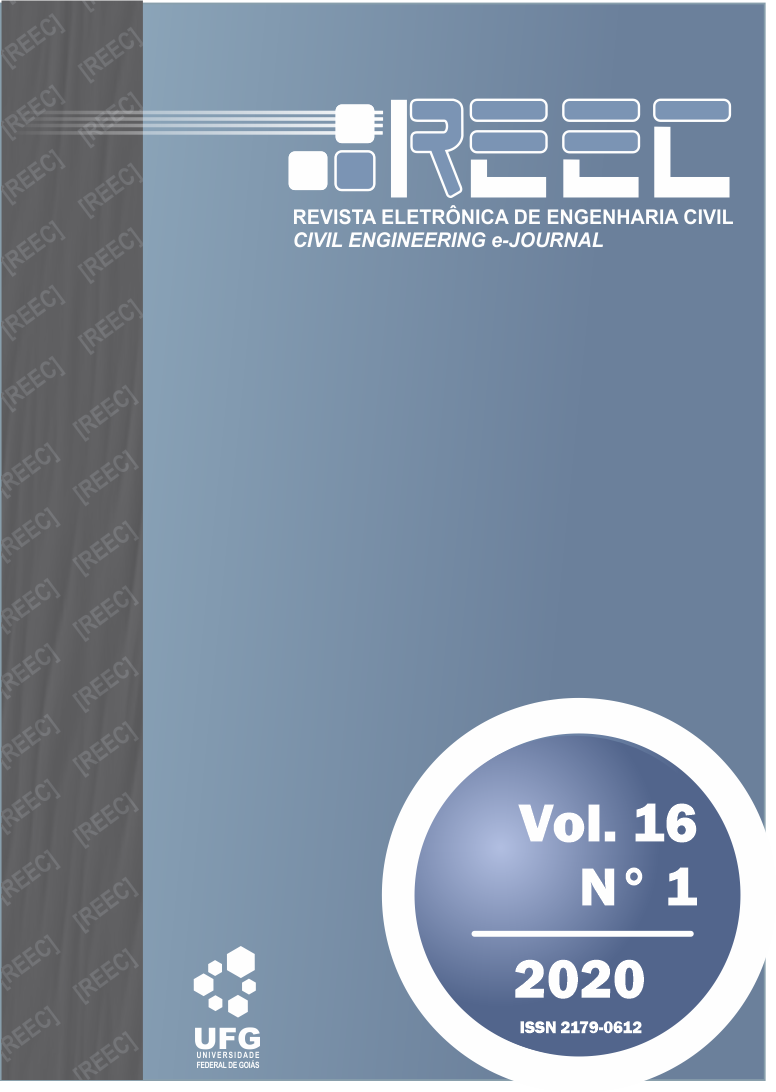Reinforced concrete beams with steel fibers submitted to flexion
DOI:
https://doi.org/10.5216/reec.v16i1.50551Abstract
ABSTRACT: The present paper compares the results experimentally of four-point bending tests of concrete beams with and without addition of steel fibers. The main objective of this work was to analyze the influence of steel fibers in modifying the appearance of pathologies related to concrete cracking. This work is justified by the fact that the implementation of reinforcement elements to the flexion effort is not widely explored in Brazil, even though there has been a considerable growth in the last decades. Beams with addition of steel fibers are not method used in Brazil, however, concrete floors and fiber-reinforced slabs are more common in the country's constructions. For bending behavior analysis, laboratory tests were performed with eight test specimens, molded with and without fibers, most of them with notch, inducing vertical propagation of the crack in the central region of the beam. It was use of a low content of steel fibers (0,25%) to avoid the workability of the concrete and, with this, to test a material that can be made in usual civil construction situations. For the fiber content studied, there an increase of 26,6% in the maximum load value. Another relevant factor was that there were no difficulties in relation to the workability of the concrete when added the fibers. The results obtained on the resistance proved efficiency when the fibers were used in the bending test.
Downloads
Downloads
Published
How to Cite
Issue
Section
License
Autores que publicam nesta revista concordam com os seguintes termos: Autores mantém os direitos autorais e concedem à revista o direito de primeira publicação, com o trabalho simultaneamente licenciado sob a Licença Creative Commons Attribution que permite o compartilhamento do trabalho com reconhecimento da autoria e publicação inicial nesta revista.
![[REEC] Revista Eletrônica de Engenharia Civil](https://revistas.ufg.br/public/journals/30/pageHeaderLogoImage_pt_BR.png)



